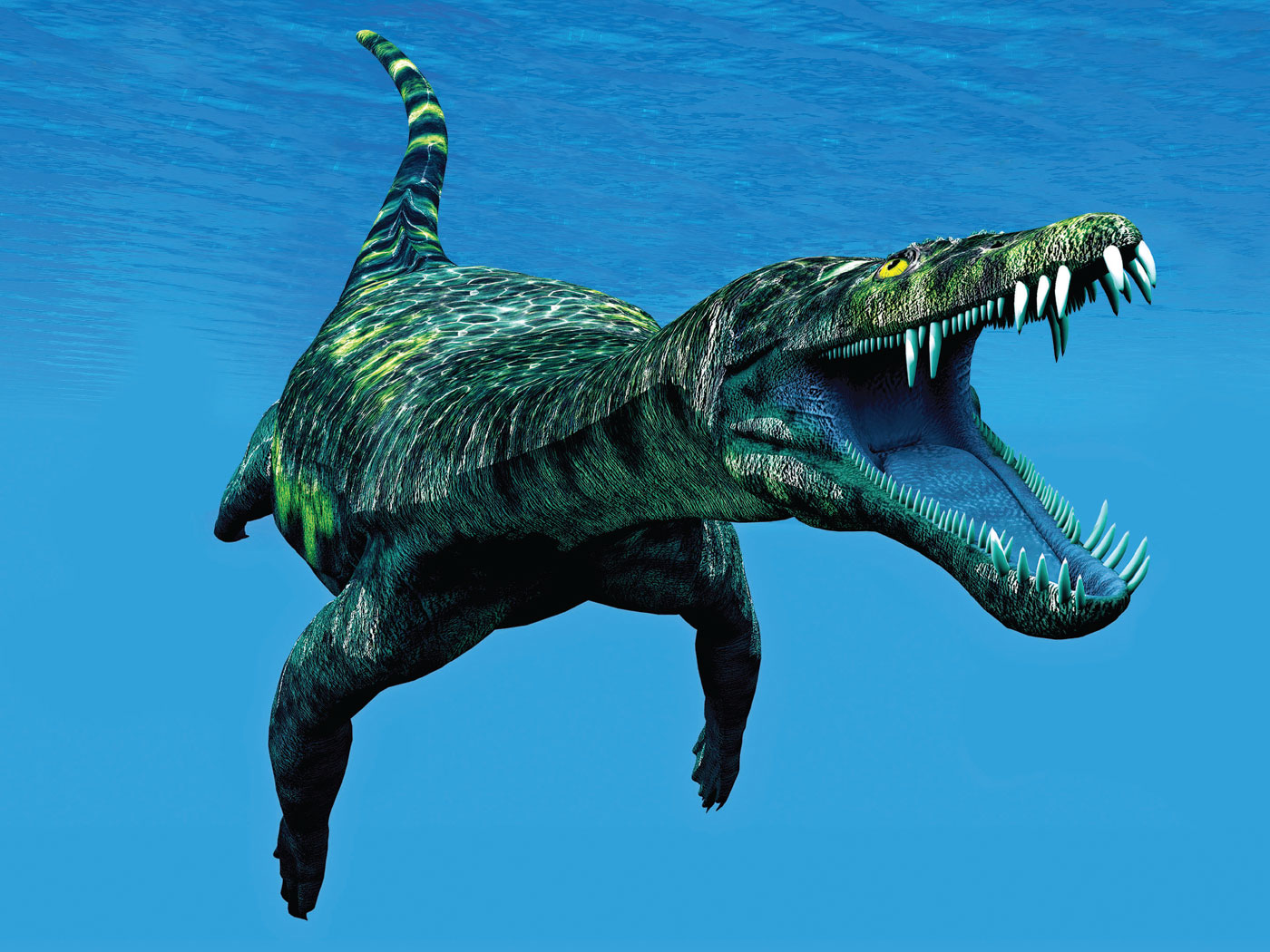The naming of newly-discovered fossils sometimes involves significant people or prominent associations. Darwinius masillae was named for British naturalist Charles Darwin. Dracorex hogwartsia was inspired by the dragons of the famed Harry Potter books. And now shipping company FedEx has been honored with a fossil of its own.
Fedexia strieglei is a two-foot-long, tusk-bearing amphibian that was found near a major airport in Pittsburgh, Pennsylvania. The “Pennsylvanian” rock system in which it was found includes fern and wet-environment plant remains fossilized in massive coal seams.
The salamander-like creature was named after the Federal Express-owned property where it was discovered and University of Pittsburgh student Adam Striegel, who originally thought the teeth he found there in 2004 were fern leaf fossils. The creature was described in the March 15, 2010, edition of the Annals of Carnegie Museum as having warty skin, like living newts.
National Geographic Daily News referred to Fedexia as an animal that existed in a separate age prior to the time of the dinosaurs.1 Although Pennsylvanian strata have been referred to for centuries as representing an “Age of Amphibians,” what if these rock units do not correspond to vast “ages” at all, but instead to vast, catastrophically deposited ecological habitats?
Historically, the credit for the idea that rock systems correspond to great ages belongs in large part to 18th-century French anatomist Georges Cuvier. He wrote in 1798, “These antiquities of nature [fossils], if they may be so termed, will provide the physical history of the globe with monuments as useful and as reliable as ordinary antiquities provide for the political and moral history of nations.”2
Thus, at its inception, the “vast age” correlation was not rigorously proven or even evaluated, but just baldly asserted. Geologist John Reed wrote in 2009 that this assumption was the first step down a slippery slope. He explained that within a context of a pre-human world of deep time, “if no one was present to record those epochs, a forensic approach was the only possible key to the past.”3 This new artifact-driven emphasis for historical investigation replaced reliance on written narratives. This eventually led to the widespread discounting of the scriptural account of earth’s early history.
Biologist Gary Parker offered an alternative interpretation to the standard practice of considering each rock system as indicative of an ancient “age.” He wrote in Creation: Facts of Life, “The ‘major layers’ or systems in the geologic column are eco-sedimentary zones, the remains of various ecological groups living in the pre-Flood world.”4
In this view, the tusk-bearing giant newt Fedexia was never part of an “Age of Amphibians,” but instead lived in a pre-Flood wet, tropical environment. This may also explain evidence that led National Geographic to state that in the late Pennsylvanian period “the world was also shifting toward a drier state.”1 Instead, the waters of Noah’s Flood may have finally reached the drier continental interior, where dinosaurs presumably lived, sometime before the 150th day or so of the Flood year. This is close to when water had finally covered the entire earth, according to the plain account in Genesis. The waters that increasingly encroached upon the land during that time produced the dinosaur-bearing geological systems that are found above the Pennsylvanian.
Although the Bible suggests a timeline of world history that precludes the vast ages that Cuvier asserted and that is incompatible with a separate “Age of Amphibians,” there is independent scientific evidence that would suggest these deposits do not represent “prehistory.” Pennsylvanian coal is mostly carbon. Some of that has been tested for a radioactive form of the carbon atom, carbon-14. Since this material spontaneously decays and becomes a stable atom in only thousands of years, there should certainly be no original carbon-14 left in the Pennsylvanian system, which is supposedly 300 million years old.
But Pennsylvanian carbon still has plenty of carbon-14! It looks to be only thousands of years old.5 Taken together, the radioactive carbon and the eyewitness testimony of the Flood force an entirely new interpretation of the timing and circumstances surrounding the burial and fossilization of Fedexia.
References
- Dell’Amore, C. “FedEx” Fossil Amphibian Found in Pittsburgh. National Geographic Daily News. Posted on news.nationalgeographic.com March 15, 2010, accessed March 18, 2010.
- Cuvier, G. 1798. Tableau élémentaire de l’histoire naturelle des animaux. Paris, France. Translated in Rudwick, M. J. S. 1997. Georges Cuvier, Fossil Bones, and Geological Catastrophes. Chicago, IL: University of Chicago Press, 35.
- Reed, J. 2009. Cuvier’s analogy and its consequences: forensics vs testimony as historical evidence. Journal of Creation. 22 (3): 115-120.
- Parker, G. 2004. Creation: Facts of Life. Green River, AR: Master Books, 196, emphasis in original.
- Baumgardner, J. 2003. Carbon Dating Undercuts Evolution’s Long Ages. Acts & Facts. 32 (10).
Image credit: Patrick Coin
* Mr. Thomas is Science Writer at the Institute for Creation Research.
Article posted on March 26, 2010.



















